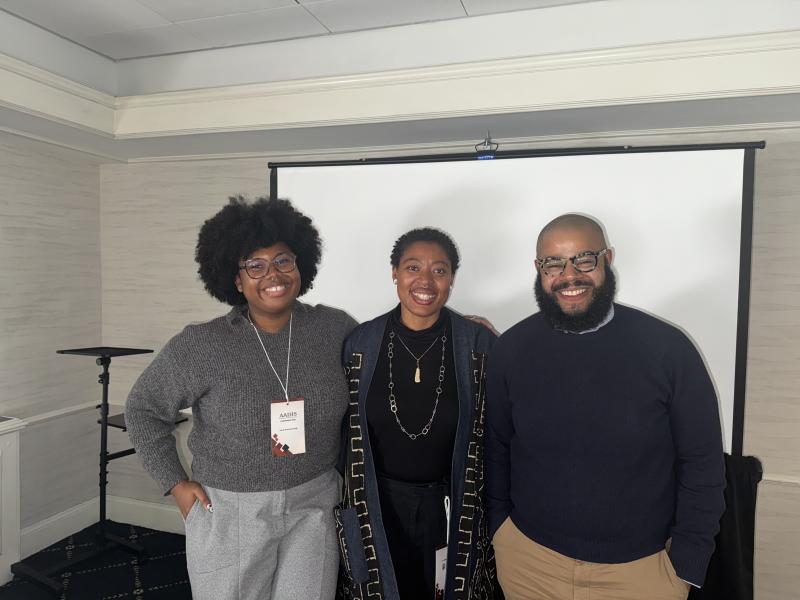PhD Student Sarah Brokenborough at the African American Intellectual History Society’s 2025 Conference in Providence, Rhode Island

This past March, first-year PhD student Sarah Brokenborough attended the African American Intellectual History Society’s 2025 Conference and presented her paper entitled, “The Artefactual Afterlives of Enslaved and Emancipated Schoolgirls’ Needlework.” She received a AAIHS Travel Award, a Southern Regional Education Board Professional Development Award, and a Stone Center Conference Presentation Grant to offset the costs of attending the conference.
The paper examines a collection of needlework samples made by enslaved and emancipated schoolgirls at a missionary school in Kingston, Jamaica in 1826. Sarah utilizes published philanthropic societies’ reports, newspaper articles, and the students’ school curriculum to demonstrate how each needlework sample was intended to signify the schoolgirls’ productivity or their aptitude for domestic service. However, all five extant embroidered samples demonstrate each Black schoolgirl’s creative agency and gesture to a larger communal effort to craft clothing for themselves and their community in and around Kingston, Jamaica. The conference’s theme, Slavery and Its Afterlives, attracted a number of scholars who research Black historical actors’ definitions of freedom, unfreedom, and belonging and provided useful feedback to further strengthen Sarah’s project.
Sarah’s ongoing research contributes to the broader field of Black intellectual history by examining Black schoolgirls’ ability to combat anti-black rhetoric that reduces their existence to perpetual servitude. She also argues that the collection of enslaved and emancipated schoolgirls’ needlework samplers can serve as records of enslavement and should be re-contextualized as products of a heavily contested Black girlhood. Ultimately, she contends that Black needleworkers in both Jamaica and the United States were keenly aware of the societal expectations placed upon them and subtly resisted demands for their labor from a young age as they practiced decorative sewing techniques in gendered communal spaces.
The AAIHS 2025 Conference also provided an opportunity to meet with other scholars who employ a transregional approach to slavery and abolition studies. Sarah notes, “The conversations and panels at AAIHS reminded of the discussions I had at the Stone Center for Latin American Studies’ one-day colloquium Caribbean Studies at Tulane: Today and Tomorrow. During the colloquium, I met with Tulane faculty and students and discussed the future of Caribbean Studies as historical research continues to explore material connections between the African continent, the United States, and the Americas.” Sarah’s art-historical research continues to contribute to these complex, layered histories of slavery and abolition.

